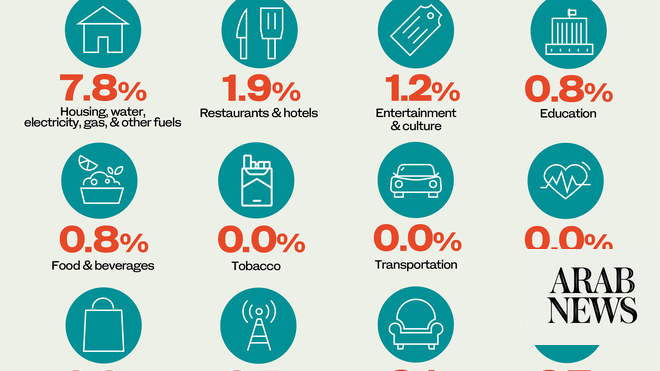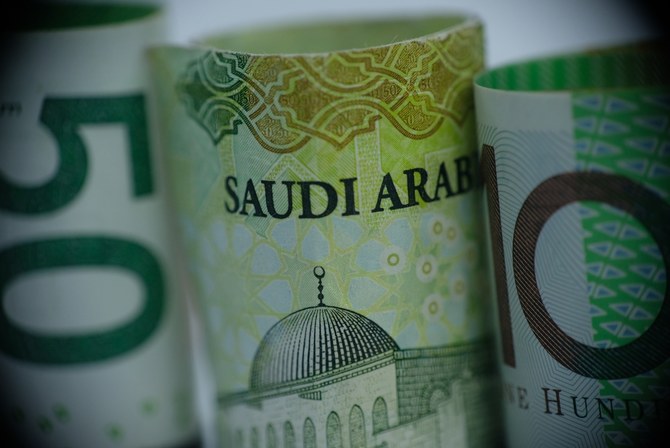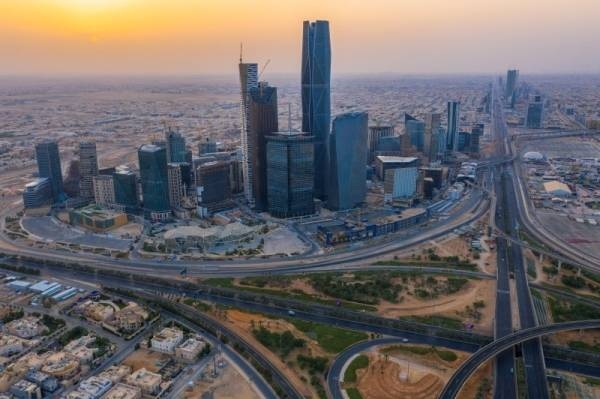
Saudi inflation rate remains among the lowest in MENA, reflecting Kingdom’s proactive measures to stabilize economy
Kingdom’s Wholesale Price Index rose by 3.2% in August compared to the same month in 2023
RIYADH: Saudi Arabia’s annual inflation rate reached 1.6 percent in August compared to the same month last year, driven by higher housing costs, official data showed.
According to the General Authority for Statistics, actual housing rents surged by 10.7 percent year on year in August, with apartment rents rising by 10.8 percent.
Saudi Arabia’s inflation rate remains among the lowest in the Middle East and North Africa, reflecting the Kingdom’s proactive measures to stabilize the economy and mitigate the effects of global price pressures.
“The increase in this category (housing) had a significant impact on maintaining the annual inflation rate for August 2024, given the weight this group represents 21 percent,” said GASTAT.
The latest report showed that food and beverage prices in the Kingdom saw a slight increase of 0.9 percent in August, while restaurant and hotel expenses rose by 1.6 percent during the same period.
In the education sector, costs increased by 1.6 percent in August, driven by a 3.8 percent rise in fees for intermediate and secondary education.
Prices for furnishing and home equipment dropped by 3.5 percent, driven by a 6.2 percent decline in the costs of furniture, carpets, and flooring.
Clothing and footwear prices fell by 3.2 percent, and transportation expenses decreased by 3.4 percent compared to August last year.
On a month-to-month basis, Saudi Arabia’s consumer price index edged up by 0.1 percent in August.
The report said that the monthly inflation was influenced by a 0.4 percent rise in housing, water, electricity, gas, and other fuel costs.
GASTAT also noted a 0.4 percent month-on-month increase in food and beverage prices, while restaurant and hotel expenses grew by 0.2 percent.
Prices for education, personal goods and services, health, communications, and tobacco remained relatively stable compared to July.
Ayman Al-Sayari, governor of the Saudi Central Bank, highlighted the Kingdom’s success in maintaining stable inflation levels, attributing it to the strong support of its exchange rate policy.
Speaking at the 83rd meeting of the Central Bank Governors Committee of the Gulf Cooperation Council in Doha on Sept. 12, he said that the average inflation rate in Saudi Arabia stood at 2 percent from 2000 to 2023.
“Monetary policies strongly positively influence the effectiveness of public spending, thereby supporting the objectives of economic diversification. The exchange rate policy has contributed positively toward the ability to formulate long-term economic policies,” said Al-Sayari.
He added: “Monetary stability is an essential enabler for economic growth in the Kingdom, with non-oil activities experiencing an average growth rate of 5 percent from 2022 to 2023.”
In August, Riyadh-based investment management and advisory firm Jadwa Investment shared a similar outlook, predicting that Saudi Arabia’s inflation will decline to 1.7 percent in 2024, revised down from 2 percent, supported by strong non-oil sector growth and lower prices in key areas.
The analysis indicated that falling prices in clothing, footwear, and transportation have helped offset inflationary pressures from the housing market. This mirrors global trends, where easing demand and improved supply chains are reducing price pressures.
Jadwa Investment said that housing costs continue to be a major driver of inflation in Saudi Arabia, particularly in the ‘rentals for housing’ segment. Prices in this category have remained high due to strong demand and a tight rental market, further strained by high interest rates that are leading more Saudis to rent rather than purchase homes.
Wholesale Price Index
In a separate report, GASTAT revealed that Saudi Arabia’s Wholesale Price Index rose by 3.2 percent in August compared to the same month last year.
The authority attributed the increase in WPI to a rise in the prices of other transportable goods, which climbed by 8.1 percent. This was primarily driven by higher expenses for basic chemicals and refined petroleum products, which surged by 13.9 percent and 12 percent, respectively.
The report also noted a 0.4 percent year-on-year increase in the prices of agricultural and fishery products in August.
The costs of ores and minerals fell by 3.7 percent in August compared to the same period in 2023, while prices for metal products, machinery, and equipment saw a slight decline of 0.1 percent.
Prices of food products, beverages, tobacco, and textiles remained largely unchanged during the month.
Saudi Arabia’s WPI saw a slight monthly increase of 0.2 percent, driven by a 0.2 percent rise in the prices of other transportable goods.
“Prices of metal products, machinery, and equipment increased by 0.3 percent month-on-month in August, as a result of a 0.9 percent increase in the prices of transport equipment,” said GASTAT.
The report also said that expenses for food products, beverages, tobacco, and textiles fell by 0.2 percent in August compared to July, driven by a 0.6 percent drop in the prices of meat, fish, fruits, vegetables, oils, and fats, as well as a 0.2 percent decline in dairy product prices.
The prices of agricultural and fishing products decreased by 0.1 percent, due to a 1.1 percent drop in the cost of live animals and animal products.
Average prices
In a separate report, GASTAT highlighted notable shifts in the average prices of goods and services across Saudi Arabia in August.
The authority reported that prices of local tomatoes surged by 19.54 percent compared to the previous month, while imported tomatoes saw a 9.83 percent increase during the same period.
Local children’s diapers experienced a month-on-month price rise of 4.94 percent in August, followed by medium local potatoes and Pakistani mangoes, with prices climbing 4.25 percent and 4.08 percent, respectively.
On the other hand, the price of dates dropped by 10.66 percent in August compared to July, and local figs saw an 8.27 percent decline.
These reports from GASTAT offer a comprehensive view of the various factors influencing inflation and the cost of living in the Kingdom.












